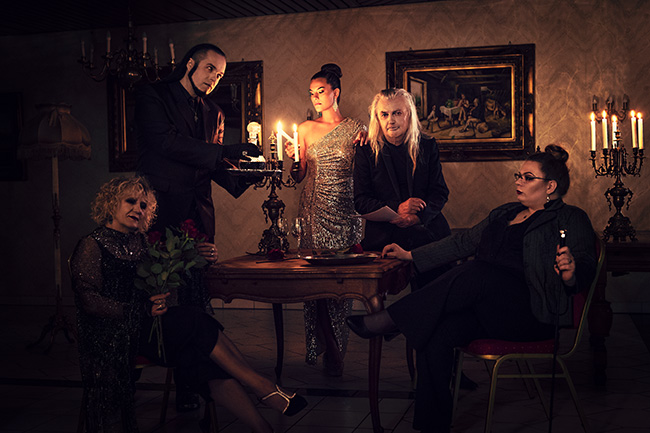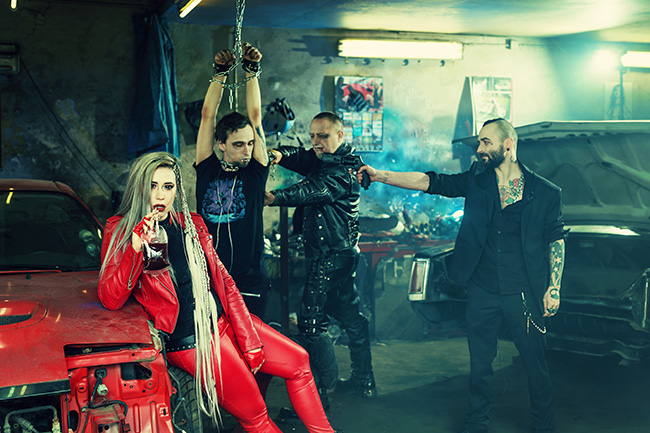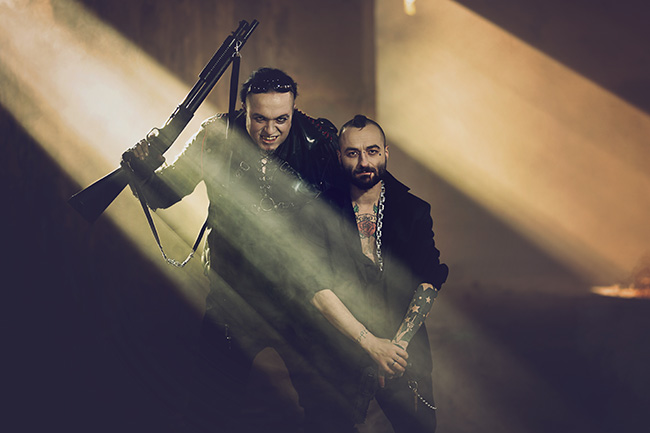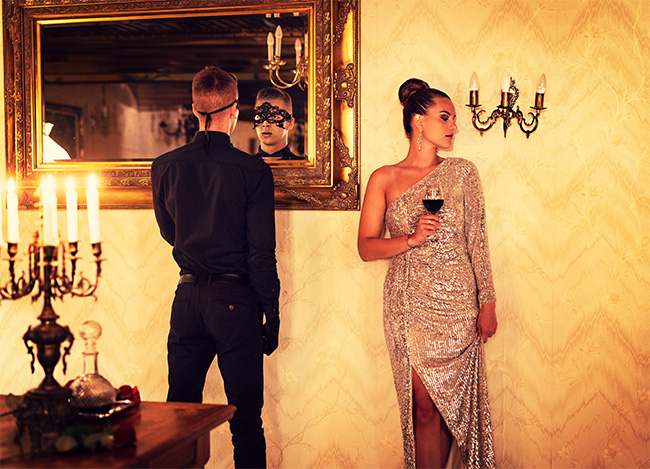Nordic Larp
~ What is Larp ~
“Larp” or “live action roleplay” combines elements of improvised theater, traditional role-playing games, and performance art to create a unique and compelling experience. No special skills, competence or “acting” ability is required. The participants pursue goals within a fictional setting represented by real world environments while interacting with each other "in-character" to create and foster artistic experiences that transcend typical theater and leave a lasting impact on the participants, enriching their lives and allowing them to step — albeit briefly — into the shoes of someone else.
You’re not a spectator! In a Larp, it doesn't matter who you are playing because there are no minor roles; everyone is an equal and your story revolves around you. Participating in a Larp is like becoming the protagonist of an improvisational production; you make all the choices. In practice, you physically portray a character and respond to the people around you and the events as they unfold in your own spontaneous way. There is no audience or written scripts. The great thing is that each Larp tells a different story and each character is as unique and special as each real person. Unlike reading a book or watching a movie, in a Larp you will experience the story in the first person: thrilling you, unveiling mysteries, and opening your heart and mind. What is most special is that the story changes according to the choices that you make.





~ What is Nordic Larp ~
Nordic Larp is sometimes referred to as “collaborative” Larp. In a collaborative Larp, the main foci are roleplay and theme, as opposed to complex rules and detailed conflict resolution systems that require you to pause the interaction in order to resolve character conflict. Instead, we create a shared narrative; a story we create by acting together with other players and not against them.
The intent of a Nordic Larp is to stay as immersed as possible in the persona of your character; to plunge deeper into emotional immersion and focus more on your character’s lived experience in a snapshot of time. To do that, participants take on the responsibility of negotiating the outcome of a scene rather than relying on traditional sets of statistics that define what their characters can or cannot do. In a Nordic style Larp, the participants in the scene strive for outcomes that generate the most fun for everyone involved or for the outcome that might lead the participants to greater emotional depth. As such, in a Nordic style event most “out-of-character” discussion is quick and used to facilitate roleplay, meaning rules are focused on consent, safety, and comfort.
Because Saturnalia is a Nordic style event, it will have fewer and simpler rules; rules that are designed to break immersion as little as possible so you remain in-character and in the action. This enables you to focus on the shared story. Through your physical actions and words, you will delve deeper into your character’s emotional state and mindset, and offer other players the chance to connect with your character and theirs more fully.
~ This is my 1st Larp Ever ~
~ Is this Event for Me ~
Yes! If this is your first Larp, you will likely find many others who are in the same boat. Do not worry! No special skills, competence, or “acting” ability is required and our superb staff will support and help you at all times.

~ Saturnalia’s Nordic Larp Principles ~
While the Saturnalia event is not heavily rules based,a few fundamental principles apply.
What You See is What You Get: In order for the event to be as immersive as possible, Nordic Larps often utilize the “what - you - see - is - what - you - get” approach. This means greater emphasis on costuming, impressive venues, and high end props. More importantly, it means acting out your intentions as a character to help other participants feel like they are in the fictional world that is the setting. This “what - you - see - is - what - you - get” approach allows participants to intensely interact for long periods, pausing only to check on whether it is safe to touch someone or to make physical contact. These short pauses are necessary to negotiate scenes that might contain difficult or taboo topics for a participant and to maintain safe boundaries and sufficient emotional distance.
Physical Contact & Violence: You should never cause physical harm to another participant. If your character is going to engage in physical violence it should be played out in a theatrical style. Never physically touch another participant without their consent.

Play for Interesting: This is not “win or lose” competitive Larp. In fact, one of the central ideals of many Nordic Larps is that everyone plays to make the event interesting. This means that even if your character may be trying to achieve a particular outcome, the participants can still actively try not to succeed if that makes things more interesting for the overall story; whatever that might mean in the given context. Thus, a power-hungry vampire who did something nefarious might “accidentally” reveal a secret because the participant is “playing for interesting.”
Play to Elevate: Playing to elevate means that you are doing what you can to support the roleplay of another participant, especially if that person seems less involved. Playing to elevate others creates a very dynamic event and, in doing so, helps build a more engaging story for you and everyone else.
Play Hard & Be Kind: The fictional World of Darkness is, by its nature, a dark place. To get the most from the event, safety needs to be at the forefront because knowing you are safe helps you get your character to darker places faster. When you know the limits of other participants and respect them, you can facilitate deeper roleplay. For this reason our workshops are mandatory and you cannot participate in this event without attending the workshops. With clear boundaries for how participants can engage in the core themes of Vampire: The Masquerade and Saturnalia (such as feeding, the beast, etc.), you can judge things better for yourselves and you will know how to opt out of situations that arise during the event if you are feeling uncomfortable. We want you and every participant to feel empowered to participate in scenes and to bow out of any scene that makes you uncomfortable. In the end, we look out for each other first, and our characters second. As the person portraying the character, you should always pay attention to your fellow participants. In the end, being flexible with your position to accommodate another’s desires by changing the story to suit everyone involved is always better than forcing an outcome, even if it is less desirable for your character at the moment.